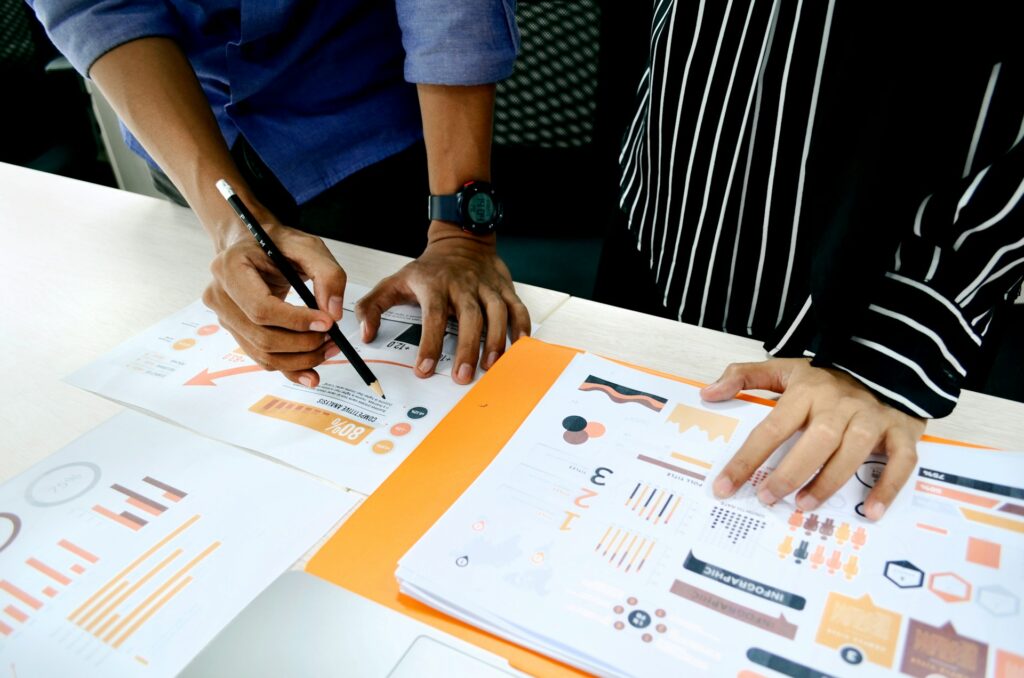How Data Visualization Drives Better Business Decisions

In 2025, businesses are dealing with more data than ever before. But raw data, no matter how extensive, is only useful when it’s understandable. This is where data visualization comes in. For UK companies aiming to thrive in competitive, fast-paced markets, data visualization is no longer a luxury—it’s a necessity.
What Is Data Visualization?
Data visualization is the graphical representation of information and data using visual elements like charts, graphs, heat maps, dashboards, and infographics. It helps people see trends, outliers, and patterns that might go unnoticed in spreadsheets or raw databases.
According to Tableau, one of the leading data visualization platforms, these tools make complex datasets more accessible and actionable for decision-makers at all levels.
Why Is Data Visualization Important in Business?
1. Faster Decision-Making
Humans process visuals 60,000 times faster than text. When data is presented graphically, stakeholders can quickly grasp insights and act with confidence. A well-designed dashboard enables CEOs, managers, and team leaders to assess KPIs in real time.
For instance, marketing teams can track campaign performance and adjust budgets instantly rather than waiting for end-of-month reports.
📊 A McKinsey & Company report found that data-driven companies are 23 times more likely to acquire customers and 6 times more likely to retain them.
2. Improved Accuracy and Reduced Bias
Data visualization eliminates the ambiguity that often accompanies decision-making based on intuition alone. By seeing the actual data, stakeholders rely less on assumptions or anecdotal evidence.
This is especially important for UK businesses navigating post-Brexit market complexities, where understanding supply chain, customer demand, and regulatory shifts is vital. Interactive dashboards offer a single source of truth for accurate decision-making.
3. Enhanced Communication and Collaboration
Charts and visuals make it easier to communicate insights across departments. Non-technical team members can understand visual reports more easily than raw spreadsheets. This fosters collaboration between marketing, finance, operations, and executive leadership.
🗣️ According to Forbes, effective data storytelling helps turn raw data into actionable insights by aligning teams around shared visual narratives.
4. Early Identification of Trends and Risks
Visual tools make anomalies and patterns easier to spot. Whether it’s a sudden dip in sales, a rise in customer complaints, or a supply chain bottleneck, visual analytics allows organisations to act before problems escalate.
UK retailers, for instance, use predictive dashboards to spot buying trends ahead of the curve—giving them a significant edge in seasonal planning and inventory control.
Real-World Use Cases in UK Businesses
-
Retail: Companies like Tesco and ASOS use data visualization to analyse customer behaviour, optimise shelf space, and forecast demand.
-
Healthcare: The NHS employs dashboards to monitor patient outcomes, resource allocation, and operational performance.
-
Finance: UK banks use real-time visual reporting for fraud detection and portfolio risk analysis.
Want to learn more about how UK businesses are applying analytics? Explore the Office for National Statistics (ONS) for insights into government-backed data initiatives.
Choosing the Right Tools
Popular data visualization tools in 2025 include:
-
Microsoft Power BI – Ideal for enterprise-level insights and real-time reporting.
-
Tableau – Known for its intuitive drag-and-drop interface and powerful integrations.
-
Looker – Best for companies invested in Google Cloud.
-
Qlik Sense – Focused on interactive analytics and self-service reporting.
Choosing the right platform depends on your organisation’s size, data maturity, and integration needs.
Common Pitfalls and How to Avoid Them
Even the best tools can fall short if misused. Watch out for:
-
Overcomplicated visuals – Keep charts clean and easy to interpret.
-
Data overload – Avoid cramming too much information onto a single dashboard.
-
Poor data quality – Ensure data sources are accurate and up to date before visualising.
For tips on data governance and management, refer to the UK Government’s Data Ethics Framework.
Final Thoughts: Making Smarter Business Moves with Visualization
In a world increasingly shaped by big data, visualization bridges the gap between data complexity and business clarity. Whether you’re a startup in Glasgow or a multinational in London, transforming data into visuals empowers your teams to act faster, smarter, and with greater confidence.
By integrating robust data visualization tools into your daily operations, your business isn’t just interpreting data—you’re turning it into a strategic asset.
